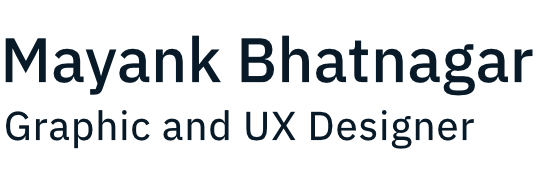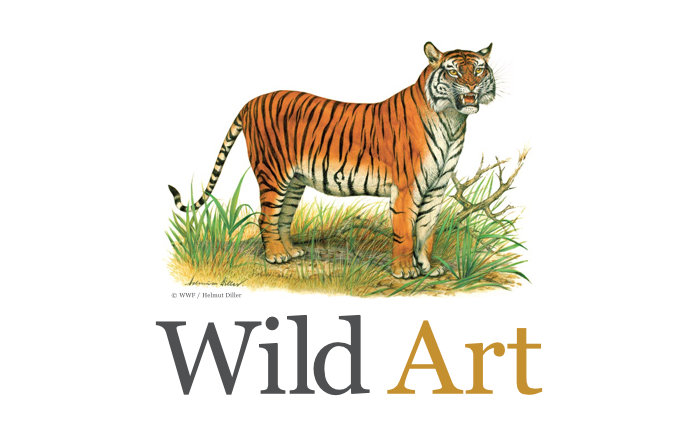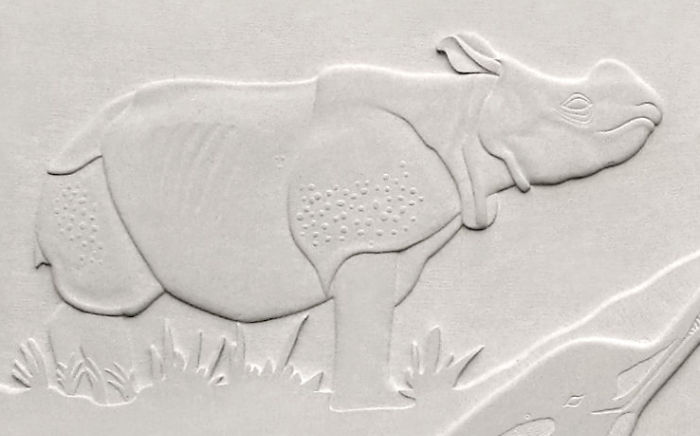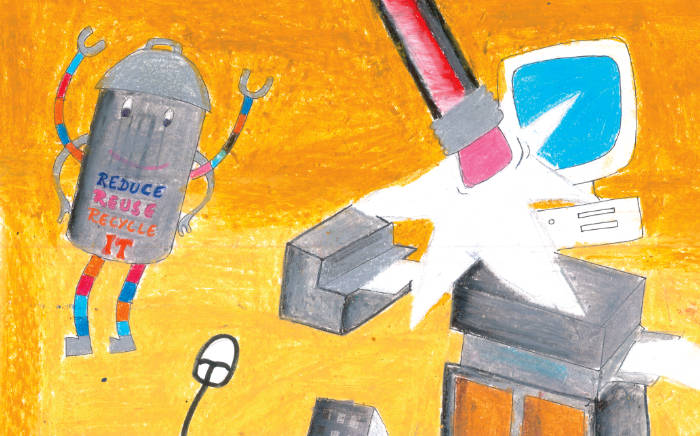Subtle design treatment helped to give a classic look to a year 2017 desk calendar featuring exquisite illustrations of Indian mammals by German artist Helmut Diller.
Background and Purpose
WWF (World Wide Fund for Nature) India is one of the foremost organisations working for the conservation of India’s wildlife and natural habitats. In 2016, they commissioned the design of a desk calendar featuring illustrations by renowned German artist Helmut Diller (1911–1984). Thirteen of his realistic, remarkably detailed renderings of mammals found in India (one for each month of the year and another for the cover) were to be showcased in the calendar.
Illustrations of species to be featured were: Asiatic Cheetah, Bengal Tiger, Clouded Leopard, Greater One-horned Rhinoceros, Indian Swamp Deer, Indian Wild Ass, Kashmir Stag / Hangul, Kiang, Manipur Brow-antlered Deer, Nilgiri Tahr, Snow Leopard and Wild Water Buffalo.
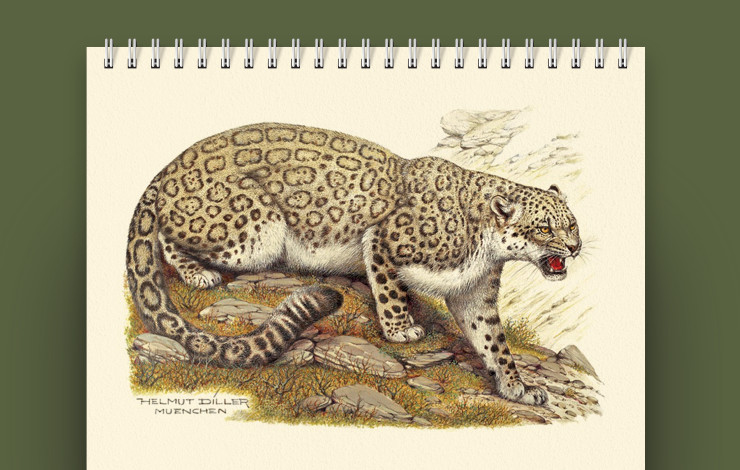
Simply named Wild Art, on the surface, the calendar was meant to appeal to a wide audience for the artistic value of the artworks featured. At a deeper level, it aimed to generate interest, awareness and disseminate knowledge about some fabulous species of mammals that could be considered crowns of India’s natural heritage. Proceeds from the sales of the calendar went to further WWF-India’s conservation mission.
The Design Challenge
The task before designer was to create a layout which allowed the remarkable artworks to dominate / stand out. ‘Classic’ was a word that came to mind when one looked at the illustrations and the designer was keen to give the calendar a classic look. The main challenge was to accommodate illustrations of different orientations (mammals facing left or right, in landscape or portrait orientation) within the confines of a relatively small desk calendar size.
Calendar Design Rationale
Keeping the illustrations in mind, the printing press and paper supplier were first consulted for an economical paper size. The designer worked in close co-ordination with the WWF-India team throughout the design and development process of the calendar.
Optimisation of Images
The illustrations were received as high resolution digital scans and required to be cleaned up and optimised for four colour offset printing. A field guide and online images were consulted as each species image was worked on in an image editing software. White balance was tweaked, unwanted colour casts and blemishes were removed and the images were saved as hi-rez TIFF files in CMYK format.
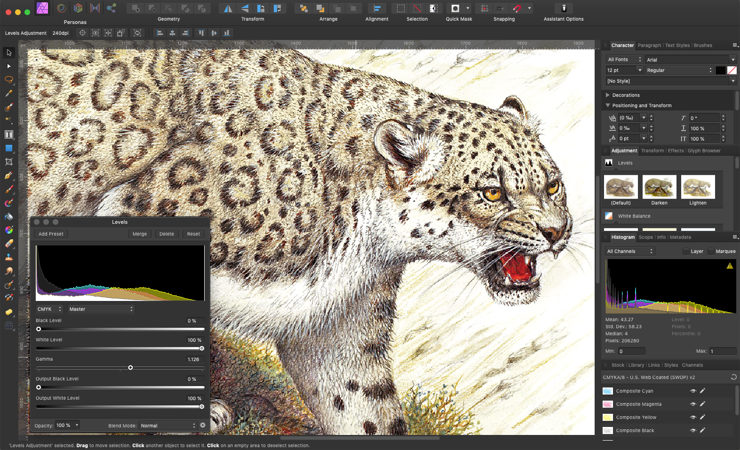
The Calendar Layout
WWF brand guidelines were consulted as the designer worked on two calendar layout options. The option finalised by the client was overall subtle and clean in look and feel, devoid of any boxed areas. In it, the illustrations were essentially supported by the required content.
The cover was dominated by an image of Bengal Tiger and the calendar name set in a large font size.
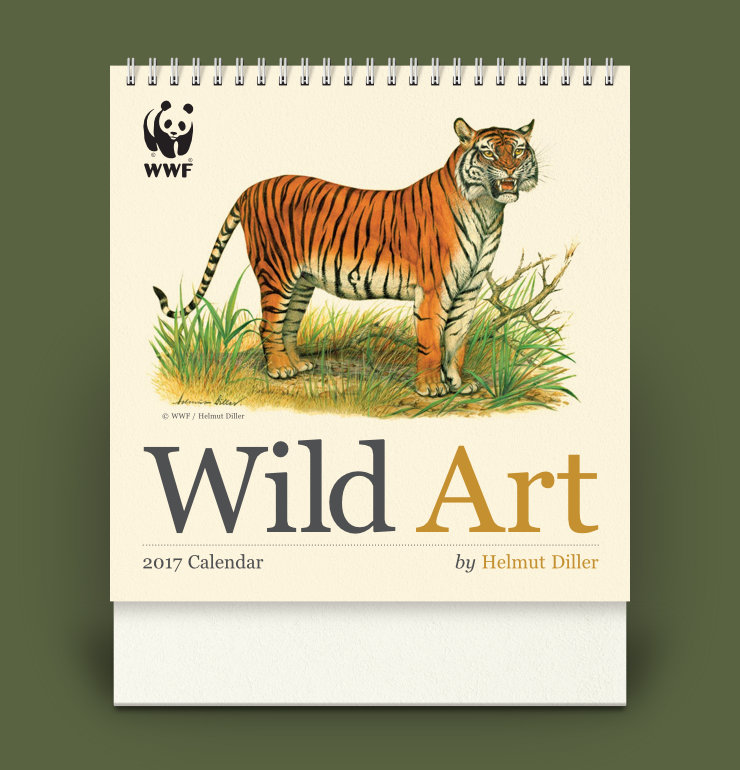
For the month / calendar pages, two distinct layouts were made, to accommodate illustrations in both landscape and portrait orientations.
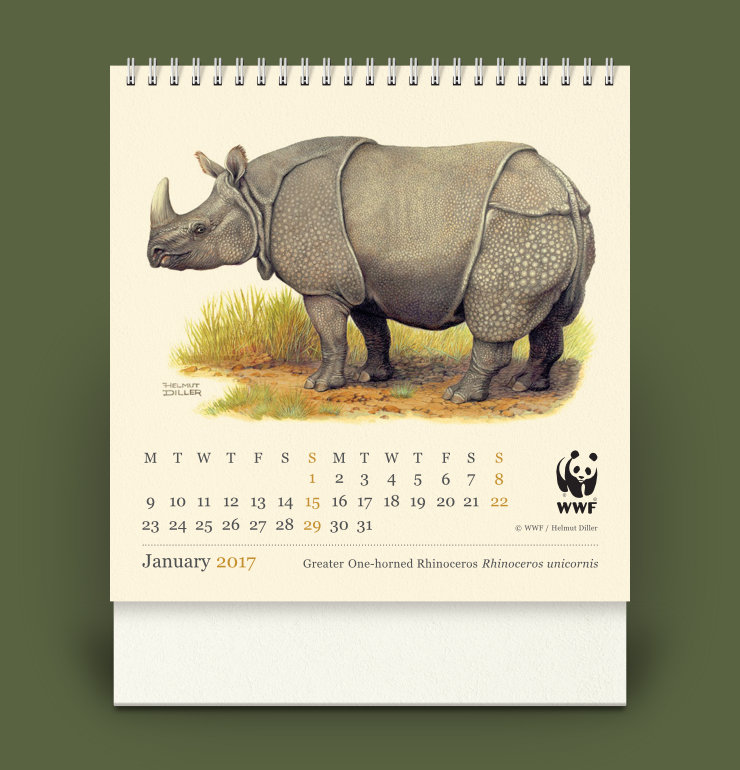
On each calendar page, the dates and WWF logo were placed below or on the right side of the illustration (basis the orientation of the illustration). Month name, year, species name and species scientific name were placed at the bottom, separated from the top portion by a subtle, horizontal dotted line. The horizontal line provided a sense of support to the overall composition.
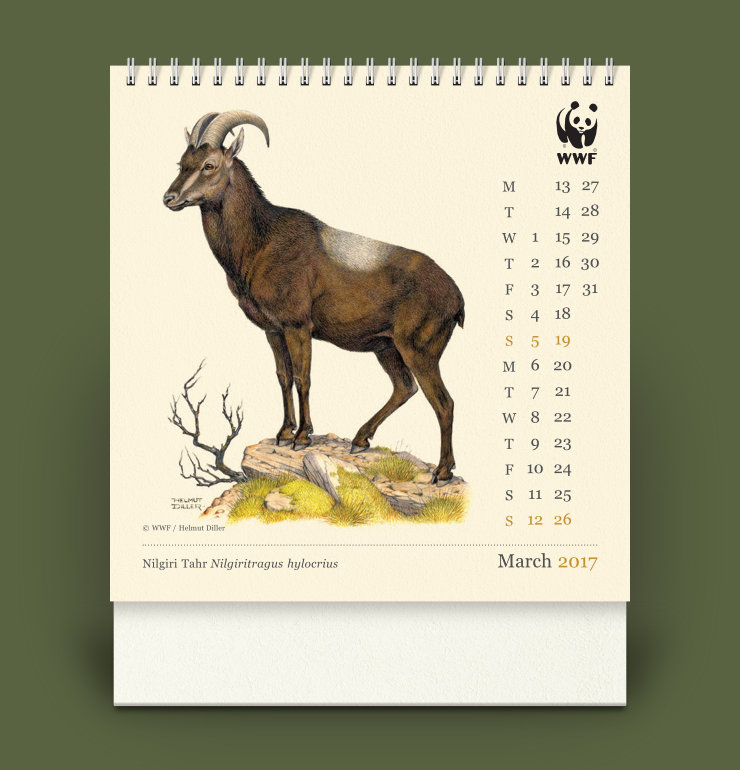
Grid Based Layout
As layouts needed to vary on different pages, a homogenised system of arrangement or backbone was needed to bring an overall sense of order / structure / harmony to the calendar. A 17 column grid (within an outer margin) was thus used to arrange visual elements on every calendar page.
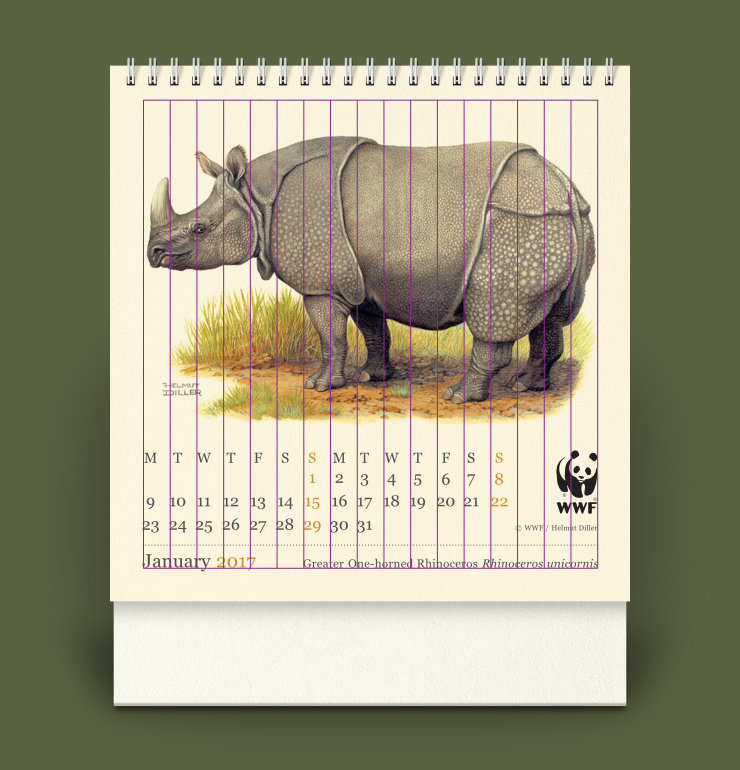
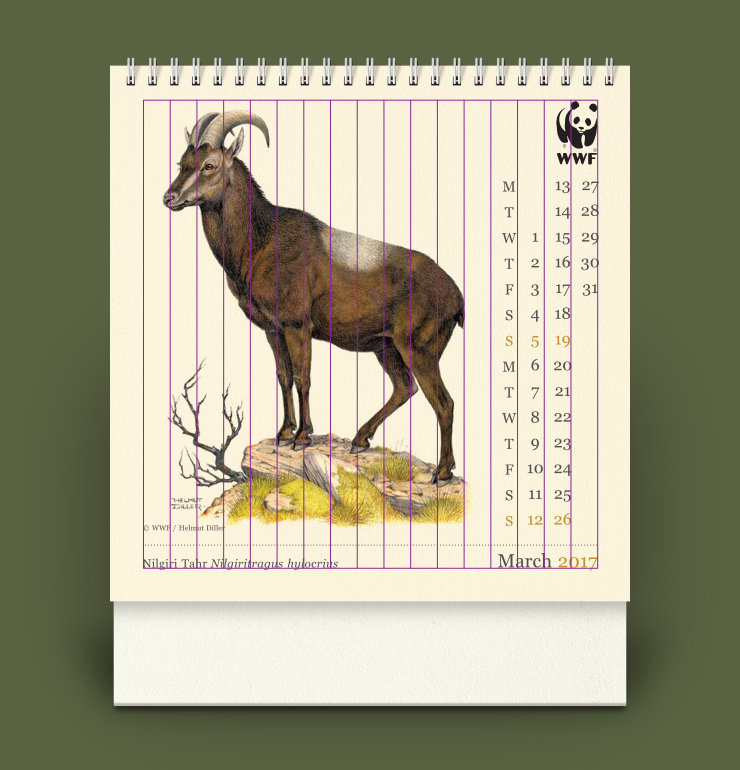
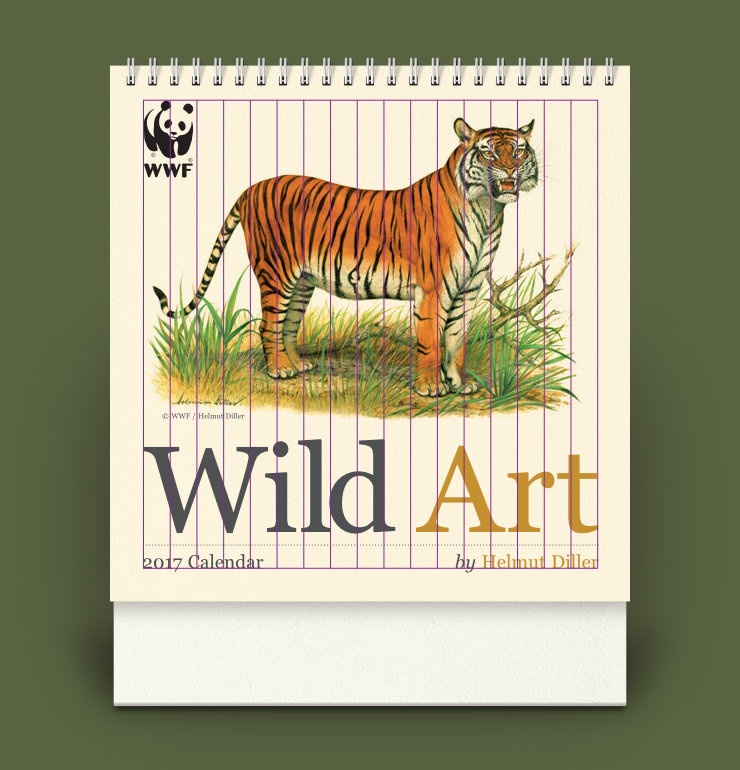
Minimal Colour Scheme
Apart from the illustrations, use of colour in the calendar was kept to a minimum. Page text was dressed in Dark Grey. Light Brown, from WWF brand guidelines, was used mainly as an accent colour to highlight key elements, like dates falling on Sundays. Calendar colour scheme was thus supportive and allowed the brilliant, colourful illustrations to stand out. Light Brown lent to the calendar a classic touch. WWF logo in black, of course, was left untouched, its presence and strength was important on every page.
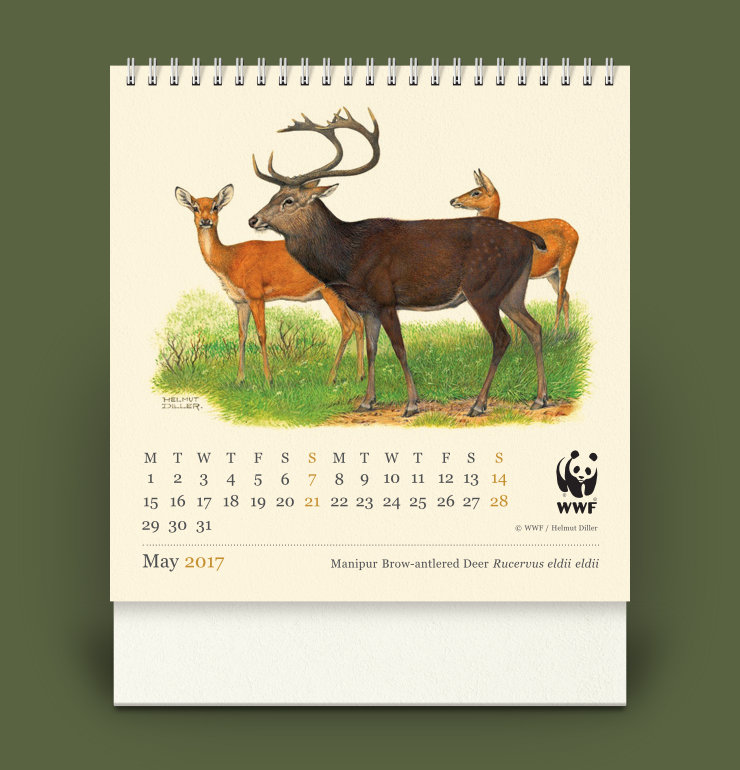
An important aspect, as far as colour goes, was use of textured paper with a Light Yellow tint. It complimented the illustrations very well and was instrumental in giving to the calendar an old or classic feel.
Subtle Typographic Treatment
Calendar text was formatted in only one typeface: Georgia, which was selected from WWF brand guidelines. It lent to the calendar a formal touch and aided its classic feel; but the typeface was also selected for its good legibility.
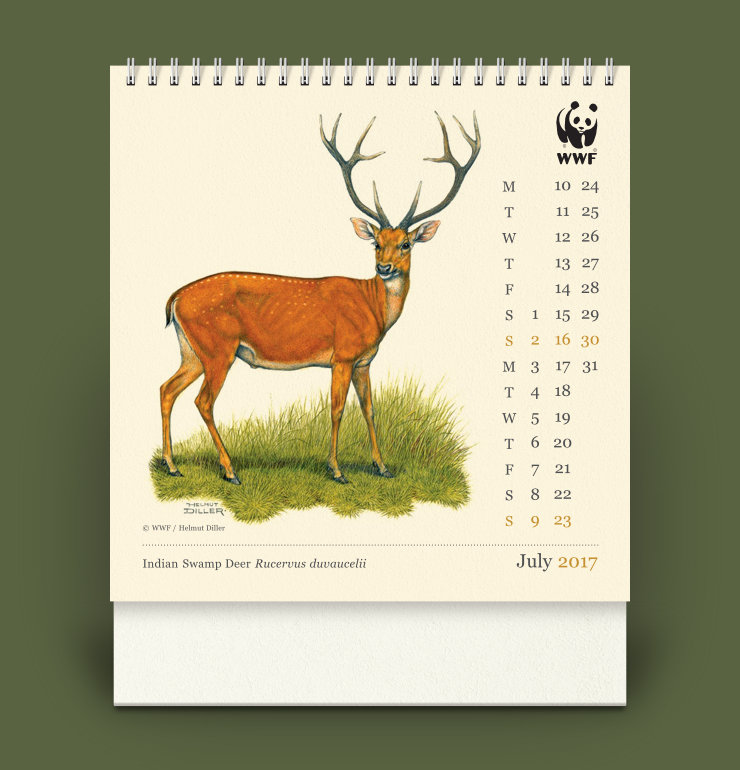
Dark Grey and Light Brown colours — in which the text was dressed — gave to the typography additional subtlety, tonality and variations.

Layout of Information Pages
Two calendar pages were dedicated to providing information about the artist and about the species, including (and importantly) about their conservation / threatened status. In this case, the illustrations supported the text.

In the information pages as well, the typeface (Georgia) and colours (Dark Grey and Light Brown) used were consistent with the rest of the calendar. Overall and again, the treatment was subtle.
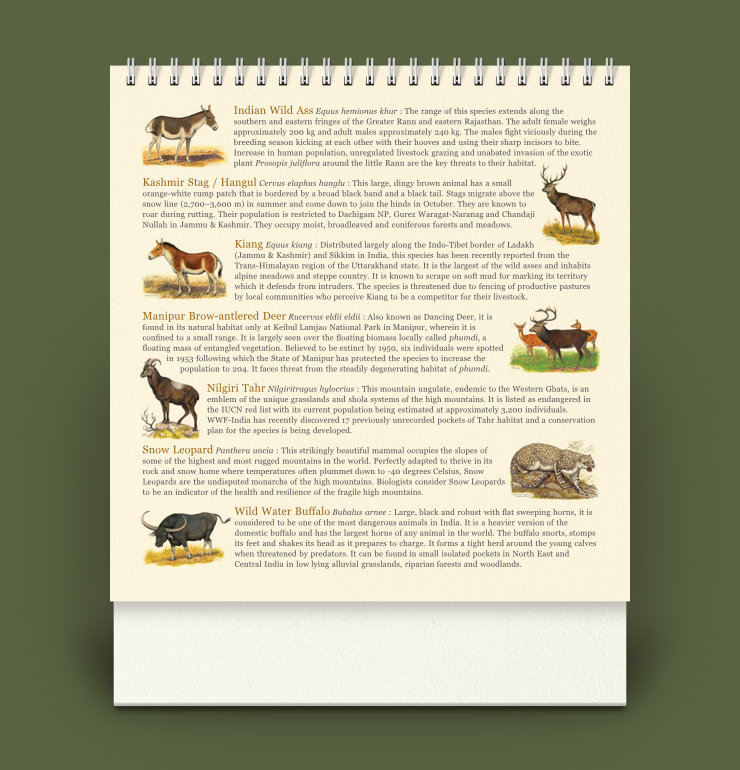
Technical Notes
The calendar had 16 pages in all, including one with information about WWF-India — which also featured mandatory, boilerplate text. It was printed on Forest Stewardship Council (FSC) Certified paper in a finished / trim size of 8 inches (width) x 8.25 inches (height). During the fabrication stage, printed pages were bound to a hard paper stand / backing by means of a Wiro.

In Essence
WWF-India 2017 Wild Art desk calendar showcased exquisite artworks of 12 stunning species of mammals from India. It was a fitting tribute to — and also a reminder of — the important role these species play in ecosystems, and in the larger environment.
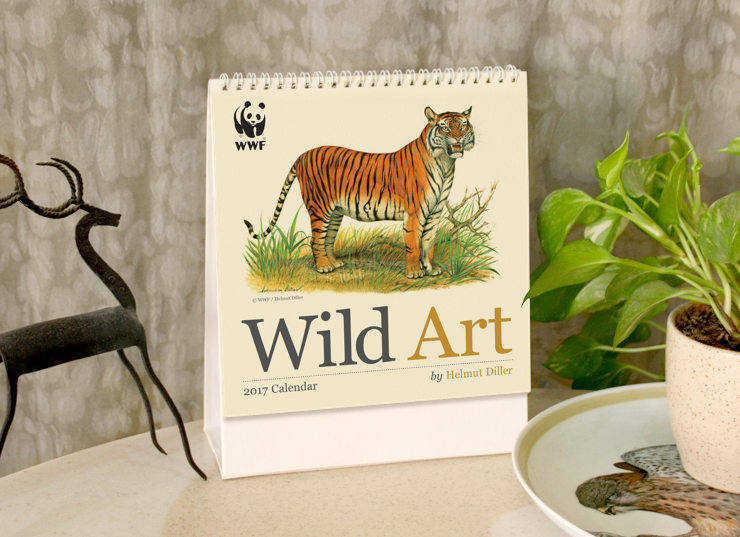
The illustrations, subtle layout treatment and choice of paper contributed to the calendar’s classic look and feel. More than a calendar, it was also a collectible for discerning wildlife and art aficionados.

WWF-India Conservation Products
WWF-India calendars have a decades old legacy. Nature / wildlife enthusiasts, supporters and many others adorn their work and living spaces with them every year. Apart from calendars, a wide range of nature related / environmentally conscious products are available at the WWF-India Online Nature Store. Please visit and support if you can, proceeds from sales go towards the organisation’s conservation mission.
Copyright Information
- WWF Panda logo / symbol, all designs and images published in this article are copyrighted and may not be copied or reproduced.
- Illustrations of mammal species © Copyright WWF / Helmut Diller.
- WWF® and ©1986 Panda Symbol are owned by WWF. All rights reserved.
- © 1986 Panda Symbol WWF – World Wide Fund For Nature (Formerly World Wildlife Fund). ® “WWF” is a WWF Registered Trademark.
- Screen shot of Affinity Photo user interface © Copyright, Serif (Europe) Ltd. Published under fair use guidelines.
